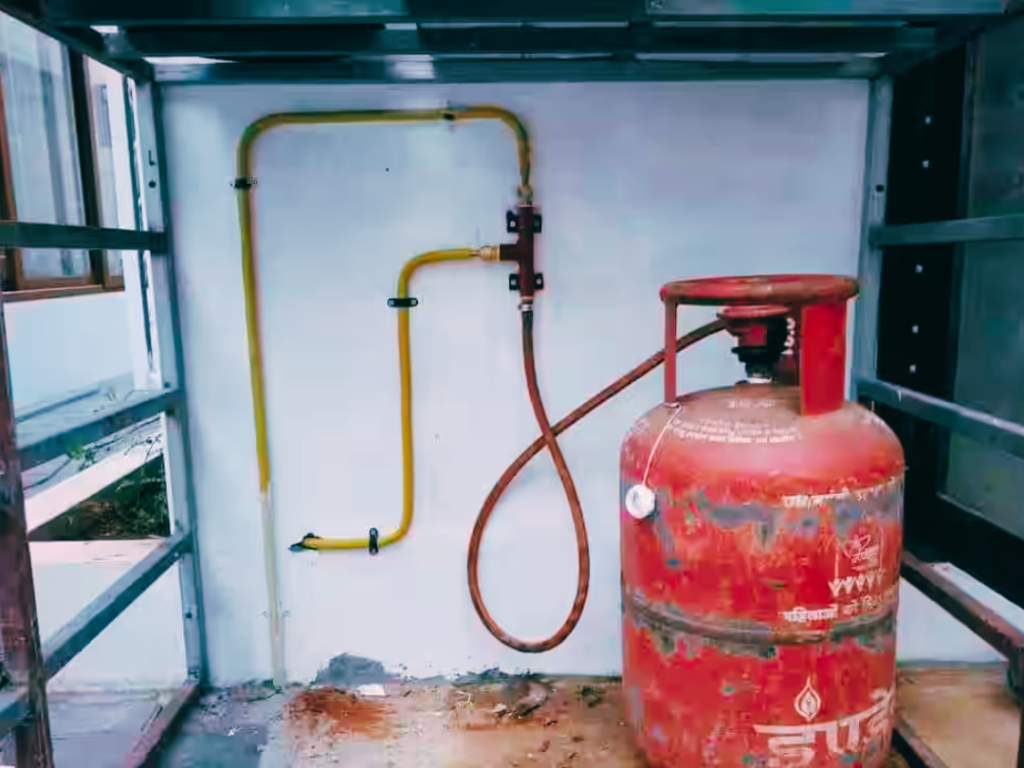
Reticulated gas system implies a network used to supply natural gas through underground pipe works to users within residential, commercial and industrial sectors. A reticulated system is preferred over traditional gas cylinders because it is more efficient cylinders need to be changed manually while a reticulated system provides direct, instant access to a main supply of the gas. In cities like Chandigarh, the need for better, safer, and more sustainable energy systems has put these systems to practice.
The system comprises of pipes, meters, valves and regulators for creating and maintaining a network of distributing natural gas for purposes including cooking, heating and operation of equipment. Of all the benefits of a reticulated gas system one is that once the system is in place, then there is no problem of lack of gas or the low supply of cylinders as is common with bottled gas. Also, these systems are less hazardous compared to the conventional gas cylinder systems which are constructed to integrate the latest safety features and should undergo periodic testing for leaks and other problems.
Gas from reticulated sources is the most environmentally friendly classified as emission characteristics compared to other fossil resources.
1. Underground pipeline network: Gas is supplied through a network of underground tubes. Hence, it would reduce the chances of an accident and more reliable.
2. Centralized gas supply: Single source supplying gas common to more than one property and avoids filling or changing the gas cylinder manually.
3. Pressure regulator: Instruments associated control and maintain the gas pressure, which is safe and effective for usage throughout the system.
4. Automatic shut-off valve: These valves help in an emergencies or failures by automatically preventing gas flows.
5. Leak detection mechanism: Advanced sensors are used to detect gas leakage and shut down the system to prevent possible threats.
How to Solve Common Reticulation System Issues
Despite reticulation system problems being recurrent, its management ought to identify the problem accurately and subsequently address it aptly. Here’s a guide on how to address some of the most frequent issues in Reticulation systems:
1. Leaking Pipes
Check the system for any signs of scorching or wetness that is a precursor to leak development. In the event of a leakage, identify where the leak started or is originating from then repair it by placing a new piece of pipe or use a pipe sealant or adhesive to fix the breakage. Large leakages may warrant the replacement of the affected section of the pipeline list_ Possible remedies include:
2 .Clogged or Blocked Lines
The major causes of blockages are therefore debris, sediment and root entry into a drainage system. To unclog, one needs to use a pipe cleansing gadget or even high-powered water stream. If roots are the issue, then one may use chemical root killers, or mechanical root realignments. Another way of avoiding future blocks in the system is by constant flushing of the system.
3. Low Water Pressure
Negatives pressure may be due to clogging, leaks, or failure of the valve. First, make sure there are no leaks, if there are, then you should fix them. Next, check each valve and make sure that it is fully open and look at the pressure regulator to be sure it was working okay. In case the regulator is faulty then replace it or try to tweak the regulator.
4. Faulty Valves or Regulators
Faulty valves and regulators should be replaced as soon as they are noticed. Make sure you buying the appropriate type and size for your air conditioning system. It is also important that one should do a check up of all the valves for signs of tear and if so, lubricate the same to avoid certain problems.
5. Uneven Water Distribution
This problem frequently arises due to the uneven distribution of the layout of the system of its partial clogging. The final maintenance step that needs to be taken is to look at all the sprinklers and emitters to determine if they work or not. Sometimes, the distribution of water may require a change in the layout of the system or having addition outlets.
6. Corroded or Broken Sprinklers or Emitters
Check sprinklers for signs of clogging and or damages. Clean the nozzles and where there is a need replace the damaged or those that have been broken and are not working as they suppose to. Make sure emitters are not obstructed by either dirt or debris and that water spray pattern is uniform.
FAQ About Reticulated Gas Systems in Chandigarh
1. Reticulated Gas System Defined.
The reticulated gas system consists of an underground network of pipes that directly supply natural gas to domestic, commercial, and industrial users. It is always available, delivered on demand, and does not require individual gas cylinders to store gaseous energy.
2. How Chandigarh Has Been Using a Reticulated Gas System.
It involves underground pipelines carrying natural gas from a central supplier to valves at properties, meters, regulatory and shut-off valves for safety and efficient purposes.
3. Advantages of a reticulated gas system in Chandigarh.
Among them include comfort, cost savings, uninterrupted and consistent supply of gas, safety provisions, and some environmental benefits, given that natural gas is cleaner when compared to other fossil fuels.
4. Is the Reticulated Gas System safe.
This system is engineered with various security components for example, automatic shut-off valves, leak detection systems, and pressure regulators among others. The features help ensure safety and efficient operations of the system.
5. Install Reticulated Gas Systems in Your Home or Office in Chandigarh.
You will need to contact a licensed gas service provider in Chandigarh for reticulated gas installation. They would assess your needs, offer installation services, and guide you on how to go about it.


